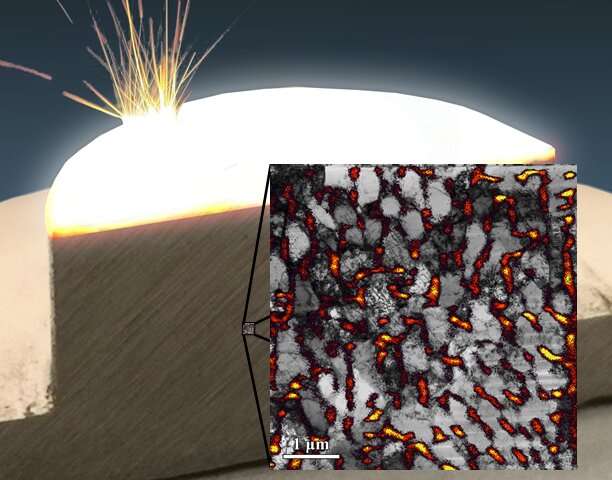Additively manufacturing a better steel via synchrotron X-ray techniques

Laser additive manufacturing—a form of 3D printing that builds up parts layer-by-layer by melting and resolidifying metal powders—has ushered in a renaissance for scientists learning how to design unique structural materials. A new study led by Stony Brook University researchers sheds light on the connection between the corrosion behavior and underlying materials structure in laser additively manufactured 316L stainless steel—a corrosion resistant metal used widely in Naval applications. Using multimodal synchrotron X-ray techniques, the team uncovered new connections between printing parameters and the defect state in the material. This enables the researchers to map pathways for engineering an even better corrosion resistant printed alloy.
The findings, published in the November issue of Additive Manufacturing, could enable the future production of a highly corrosion resistant stainless steel by engineering its defects at the nanoscale. The research also demonstrated that multimodal synchrotron techniques are becoming essential tools in establishing correlations between the printing process, underlying structure of the material, and its realized performance.
"The major focus of our study was to understand the corrosion behavior of laser additively manufactured 316L stainless steel in the context of microstructural defects that form due to the rapid solidification rates inherent to this 3D printing process," explains Jason Trelewicz, Ph.D., corresponding author and Associate Professor of Materials Science and Engineering in the College of Engineering and Applied Sciences and the Institute for Advanced Computational Science. "We show that while uniform surface corrosion of the printed 316L is similar to a traditional 316L alloy, the printed material exhibits an increased susceptibility to pitting, particularly in the samples with the greatest defect density uncovered from our synchrotron measurements."
The team, consisting of research scientists and students in Professor Trelewicz's group, the Engineered Microstructures and Radiation Effects Laboratory, working with collaborators at Brookhaven National Laboratory, conducted the synchrotron X-ray experiments at Brookhaven's National Synchrotron Light Source II (NSLS-II). The 316L samples were printed at the Pennsylvania State University by collaborator Professor Guha Manogharan. The team performed correlative electron microscopy at the Center for Functional Nanomaterials (CFN) at Brookhaven and corrosion measurements performed at Stony Brook University.
Beyond the development of novel additively manufactured materials, Trelewicz says the findings highlight the critical role correlative synchrotron X-ray and electron microscopy measurements can play in building a detailed picture of volume-averaged microstructural trends in materials developed by laser additive manufacturing.
More information: David J. Sprouster et al, Dislocation microstructure and its influence on corrosion behavior in laser additively manufactured 316L stainless steel, Additive Manufacturing (2021). DOI: 10.1016/j.addma.2021.102263
Provided by Stony Brook University





















